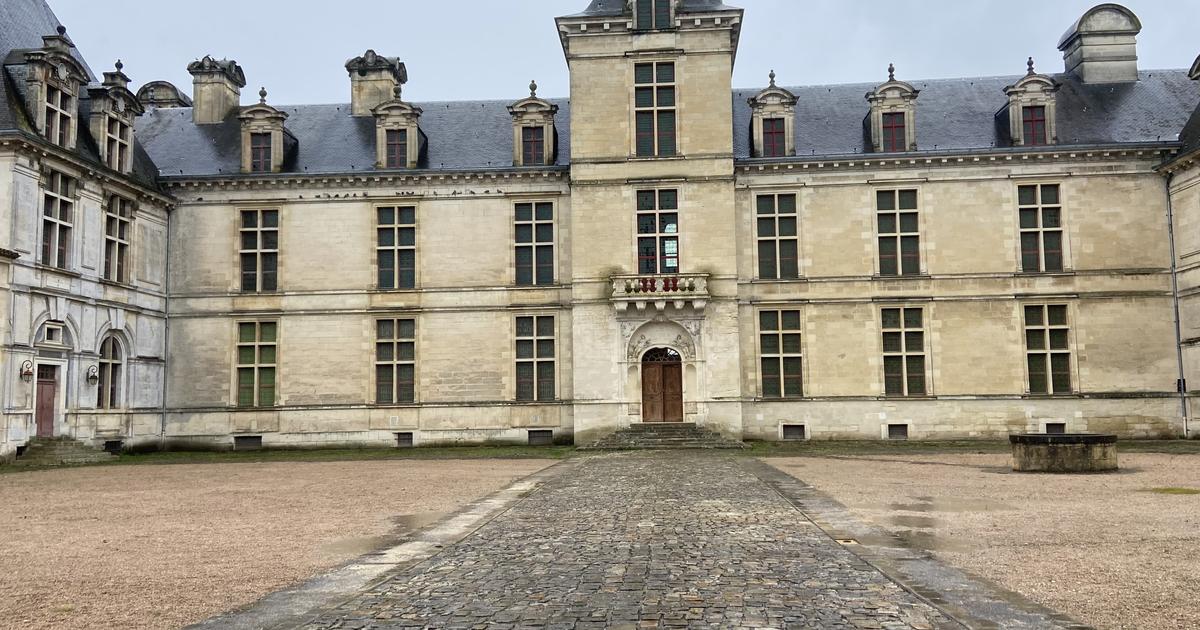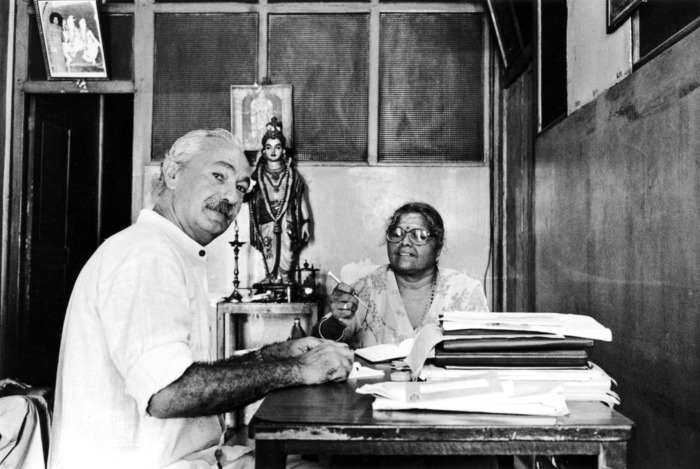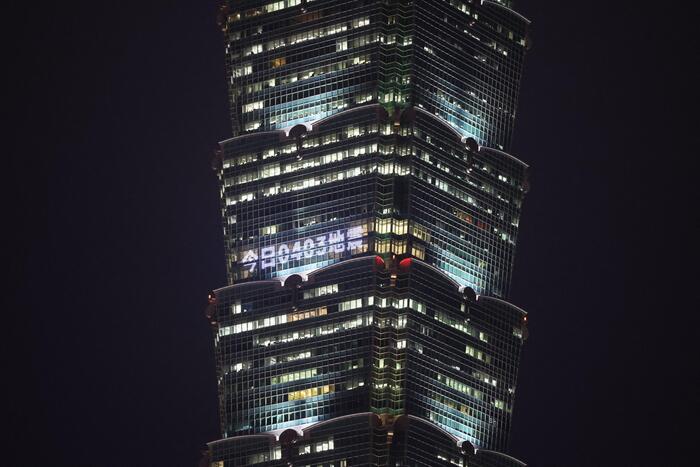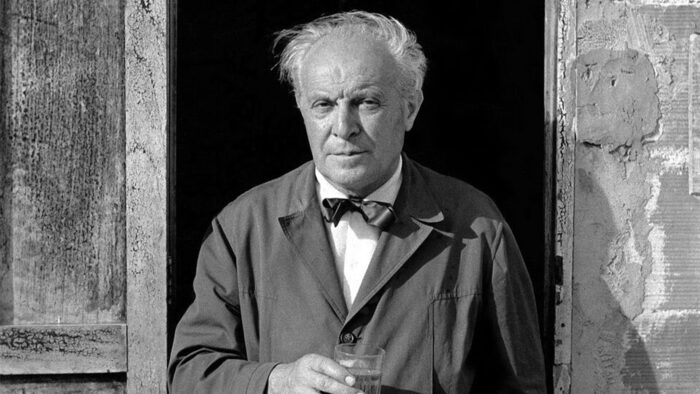It was only at the beginning of the 20th century that the earthly world of human life began to occupy heaven. And it happened in Chicago, where a new phenomenon of towers emerged in the super flat landscape of the med ...
- Click to share on Facebook (Opens in a new window)
- Click to share on Twitter (Opens in a new window)
- Click here to share on LinkedIn (Opens in a new window)
- Click to email a friend (Opens in a new window)
Editor's Note: Sam Jacob is director of Sam Jacob Studio of architecture and design, professor of architecture at the University of Illinois at Chicago, and visiting professor at the Yale School of Architecture. His work has been published at the Victoria & Albert Museum in London and at the MAK in Vienna. He was also curator of the British Pavilion of the Venice Biennale in 2014. The opinions expressed in this article are his alone.
(CNN) - If you see a drawing before the Great Fire of London, you can see a messy city with little height. An urban miasma of houses and inns pierced by an incredible amount of needles pointing towards the sky.
It is an image of a city whose horizon contained the hustle and bustle of worldly life, while its vertical dimension was dedicated to higher ideals.
Before the Great Fire of London, the capital was a messy city with little height. The photo shows a 17th-century London replica. On a barge on the Thames it is lit at an event to commemorate the 350th anniversary of the fire. (Credit: JUSTIN TALLIS / AFP / AFP / Getty Images)
So it was for most of the history of high-rise architecture. The towers were structures that had a special role: symbolic, monumental, even mythological. They acted as symbols of power, of devotion, or in the case of the biblical story of Babel, to exceed ambition.
It was only at the beginning of the 20th century that the earthly world of human life began to occupy heaven. And it happened in Chicago, where a new tower phenomenon emerged in the super-flat landscape of the American Midwest. As the size and population of the city exploded at the end of that century, construction technologies combined with Chicago's supreme pragmatism to invent the modern typology of the skyscraper.
- READ: The buildings of the 21st century that have transformed New York
The Home Insurance Building, in Chicago in 1926. It was demolished in 1931. (Credit: Chicago History Museum / Contributor)
The 42-meter-high Chicago Home Insurance Building was opened in 1885 and was the first tall building to use steel structures in its framework. Others followed quickly, and the Chicago School, as it was known, developed a new typology that combined modernity with decoration and ornament.
The Monadnock building, on the left, appears in this photo. He was photographed from a neighboring skyscraper in 1895. (Credit: Hulton Archive / Stringer)
In those buildings you can see old architectural ideas about which buildings should be stretched thanks to modern possibilities. Other examples include the Monadnock Building (the largest commercial building in the world at the time of its construction in 1892), the Reliance Building (famous for developing large glass windows), and the Marquette Building (with its intricately designed terracotta exterior ). Each of these buildings helped develop the typology of skyscrapers.
Enabled by technology, these new American commercial buildings also had a role in the economy. Building high meant that developers could multiply plots of land vertically, stacking floor after floor to multiply the value over and over again.
This means that the types of speculation familiar to the Chicago and New York stock exchanges could be applied to the act of building.
- READ: Are these the best buildings in the world? Reveal the list of nominees for the 2018 RIBA awards
The Reliance building, Chicago. (Credit: Chicago History Museum / Contributor)
In Europe, the architects observed the possibilities of the great height differently. Instead of commercial value, the first modernists saw how a different type of social value could be created. Advances in technology, they hoped, could be used to create a more equitable social good.
The Marquette building, Chicago (built in 1895). (Credit: stevegeer)
Emerging as part of post-war reconstruction, the towers became an important part of the provision of public housing. Symbolically, those towers of the welfare state offered something new, something modern with light and air that represented an escape from the filthy industrial city of the past, the liberation of the old order.
1 of 30 | The tallest spiral towers in the world - The Council of Tall Buildings and Urban Habitat (CTBUH) published a complete list of the tallest spiral buildings in the world that are already finished or under construction. From Shanghai to Dubai, CNN takes a look at these spectacular spiral skyscrapers, as well as some of the tallest buildings in the world.
2 of 30 | Shanghai Tower, Shanghai, China - Topping the CTBUH list in terms of height, is the Shanghai Tower that turns 632 meters to the sky.
3 of 30 | Shanghai Tower, Shanghai, China - The Shanghai Tower is also the tallest building in China and the second tallest skyscraper in the world after the famous Burj Khalifa in Dubai.
4 of 30 | Shanghai Tower, Shanghai, China - Located in the flourishing financial district of Lujiazui, in Shanghai and designed by the architects Marshall Strabala and Jun Xia of Gensler, its twisted shape accommodates strong typhoon winds. The tower was completed at the end of 2015.
5 of 30 | The Lakhta Center, St. Petersburg, Russia - Although not yet finished, the second tallest spiral building on the CTBUH list is the Lakhta Center, a tower in St. Petersburg, Russia.
6 of 30 | The Lakhta Center, St. Petersburg, Russia - It was designed by British architect Tony Kettle in conjunction with Gorproject. The tower has a projected height of 462 meters and is expected to be completed by the end of 2018.
7 of 30 | Ocean Heights, Dubai, United Arab Emirates - It is a residential skyscraper in the Dubai Marina. Ocean Heights is 310 meters high and 83 floors. This is the second tallest spiral tower in the world finished and was designed by American architect Andrew Bromberg of Aedas.
8 of 30 | Cayan Tower, Dubai, United Arab Emirates - Completed in 2013 and designed by Skidmore, Owings & Merrill, the Cayan Tower reaches 306 meters. It is the third tallest tower in the world in finished spiral, according to CTBUH.
9 of 30 | Evolution Tower, Moscow, Russia - A white ribbon borders the impressive Evolution Tower of Moscow, which reached 246 meters high when it was completed in 2015.
10 of 30 | Evolution Tower, Moscow, Russia - Inspired by the city's St. Basil's Cathedral and the Talin Tower that was never completed, the main architect of the design was Philip Nikandrov of Gorproject.
11 of 30 | 'Turning Torso', Malmo, Sweden - The first tallest building in the world in spiral was 190 meters 'Turning Torso', designed by the Spanish architect Santiago Calatrava and completed in 2005.
12 of 30 | 'Turning Torso', Malmo, Sweden - "The unconventional form of a twisted structure means that every component of the tall building design must be rethought," says Shawn Ursin, author of the CTBUH report.
13 of 30 | The Towers of the World Condominium of the Absolute E & D, Ontario, Canada - Nicknamed the 'Marylin Monroe' towers by local residents due to their fluid and natural lines, they were designed by MAD Architects.
14 of 30 | The Towers of the World Condominium of the Absolute E & D, Ontario, Canada - These two spiral towers reach 176 and 158 meters high.
15 of 30 | The 'Burj Khalifa', Dubai, United Arab Emirates - Claiming its crown as the tallest building in the world after its completion in 2010, the 'Burj Khalifa' rises 198 meters above its nearest finished competitor.
16 of 30 | The Tower, Dubai, United Arab Emirates - However, the 828 meter mark of the 'Burj Khalifa' on the Dubai skyline could soon be surpassed by a new mega-tall skyscraper.
17 of 30 | The Tower, Dubai, United Arab Emirates - Although it does not have an official name yet, The Tower at Dubai Creek Harbor will be 100 meters higher than the 'Burj Khalifa'.
18 of 30 | The Tower, Dubai, United Arab Emirates - Designed by Santiago Calatrava, the tower is expected to be completed in 2020 and will have ten observation platforms at its oval-shaped peak.
19 of 30 | Jeddah Tower, Saudi Arabia - Also competing for the title of the tallest building in the world is the Jeddah Tower in Saudi Arabia. Designed by Adrian Smith + Gordon Gill Architecture, the tower aims to break the threshold of one kilometer after its planned completion for 2019. This type of innovation is not cheap, the structure is expected to cost 1.230 million dollars.
20 of 30 | 'Sky Mile Tower', Tokyo, Japan - To take the competition even further, the proposal for a tower twice the height of the 'Burj Khalifa' was announced in February by Kohn Pefersen Fox Associates (KPF) and Leslie E Robertson Associates (LERA).
21 of 30 | 'Sky Mile Tower', Tokyo, Japan - The 1,600-meter building is part of a futuristic city concept called 'Next Tokyo 2045', which visualizes a floating mega-city in Tokyo Bay .
22 of 30 | '1 Undershaft', London, United Kingdom - In December 2015, the plans for '1 Undershaft' were revealed, a 300-meter-high building that could become the tallest skyscraper in London.
23 of 30 | '1 Undershaft', London, United Kingdom - '1 Undershaft' will be on the opposite bank of the current tallest building in London, at its highest point it is expected to reach 309 meters.
24 of 30 | '432 Park Avenue', New York, USA - '432 Park Avenue', the only completely residential tower in the Western Hemisphere, opened in December 2015 and recently became the 100th highest building in the world. The 425.5 meter structure was designed by Rafael Viñoly of SLCE Arquitectos.
25 of 30 | 'One World Trade Center', New York, USA - Known as the Freedom Tower is located in part of the area previously occupied by the twin towers. At 541 meters it is the tallest building in the western hemisphere with a cost of 3,900 million, according to Forbes magazine. The structure was designed by Skidmore, Owings & Merrill.
26 of 30 | 'Taipei 101', Taipei, Taiwan - The first skyscraper to break the half-kilometer mark, 'Taipei 101' stands at 508 meters high and was designed by CY Lee & Partners. To withstand the inclement weather - including typhoons, earthquakes and winds of 216 km / h -, 'Taipei 101' uses a 660 ton damping ball of mass suspended from the 92nd floor, which is balanced to compensate for the movement of the building.
27 of 30 | The Shanghai World Financial Center, China - The construction of the third Shanghai super-high building took 11 years, but the skyscraper known as 'The Bottle Opener' was praised when it was completed in 2008. At 492 meters high, among the residents of the building Kohn Pedersen Fox's 'Park Hyatt Shanghai' and the offices of Ernst & Young, Morgan Stanley and BNP Paribas.
28 of 30 | The International Trade Center, Hong Kong, China - The tallest building in Hong Kong has 108 floors, but if you walk inside the building the story is different. The tetraphobia of the city - the fear of number four - means that the floors with that number have been omitted and the center of 484 meters high, is marketed as a 118-story skyscraper. The building was designed by Kohn Pedersen Fox.
29 of 30 | Petronas Towers 1 and 2, Kuala Lumpur, Malaysia - The eighth tallest set skyscraper completed remains the tallest twin towers in the world with 451.9 meters. Completed in 1996 and opened in 1999, it has been the scene of numerous spooky tricks. Felix Baumgartner set a world BASE jump record in 1999, jumping from a window cleaning crane. In 2009 the Frenchman Alain Robert, known as 'Spiderman', climbed freely to the top of Tower Two without safety equipment, he did so in less than two hours. It was designed by César Pelli.
30 of 30 | 'Turning Torso', Malmo, Sweden - The first tallest building in the world in spiral was 190 meters 'Turning Torso', designed by the Spanish architect Santiago Calatrava and completed in 2005. Looking now over the London skyline, we can see these two types of towers: skyscrapers built as houses for people and bright vertical buildings of the city's financial heart: The Gherkin, Cheesegrater, Walkie Talkie et al. We see the new developments of luxury, super skyscrapers built as high-end houses, or more often, business opportunities. Just as the skyline of old London reflected the aspirations and ideas of its time, we see silhouettes that reflect ours.
And among them, the charred shell of the Grenfell Tower, after a tragic fire in 2017 that killed at least 71 people. It is a totem that means the battle for the right to the city that has characterized recent years.
As social housing has been increasingly privatized and funds have been reduced, we have seen the boom in other types of skyscrapers for business and for the rich. This has led to a schizophrenic state where there are calls to demolish all homes of the postwar high, and at the same time accelerating the life of high-end luxury.
- READ: Bangkok's 'ghost' towers are still standing after twenty years of abandonment
The remains of the Grenfell Tower are seen from a neighboring tower on June 26, 2017 in London. (Credit: Carl Court / Getty Images Europe / Getty Images)
Outside the political situation, the towers still seem to have those same dreams and ancient Babylonian fears. The height brings a separation from the city that follows. For some the towers means power and success or a kind of beautiful calm, while others see the alignment of the streets and elevation arrogant.
On the one hand, places are full of the light of aspiration, on the other hand, of arrogance and moral danger, as if defying the laws of gravity were in some way an excess of the normal social or economic order.
It is strange that the tower, a new phenomenon relatively speaking, has become so quickly a typecast, as if we had exhausted our imagination about the possibilities of vertical life. It may be appropriate that - back to his birthplace - the tower as a speculative possibility has been the centerpiece of this year's Chicago Architecture Biennale. In the “The Vertical City” exhibit, art directors Sharon Johnston and Mark Lee invited more than 15 emerging architecture consultants to reinterpret the tower as a type of building through giant five-meter high models.
(Not) Another Tower ”by Tatiana Bilbao (2017) (Credit: Tom Harris)
'(Not) Another Tower' by Tatiana Bilbao, suggested how vertical building technology could become a framework to allow a more ad hoc community to become a kind of civic collage in the sky.
My own firm — Sam Jacob Studio — imagined how a high-rise building could be formed from stacked sections of different types of buildings, one above the other, so that instead of repeating the floor plate, a large number of different types of buildings, spaces and uses, could be possible.
In other words, these propositions show that there are many ways to reimagine the tower beyond its current state. To revitalize the possibilities of vertical construction with the same energy that was the source of his original invention, as an economic as well as a social possibility.
Architecture Style








/cloudfront-eu-central-1.images.arcpublishing.com/prisa/L2GUYXJ3FVDMXESOLU4CJ4VQZY.jpg)





